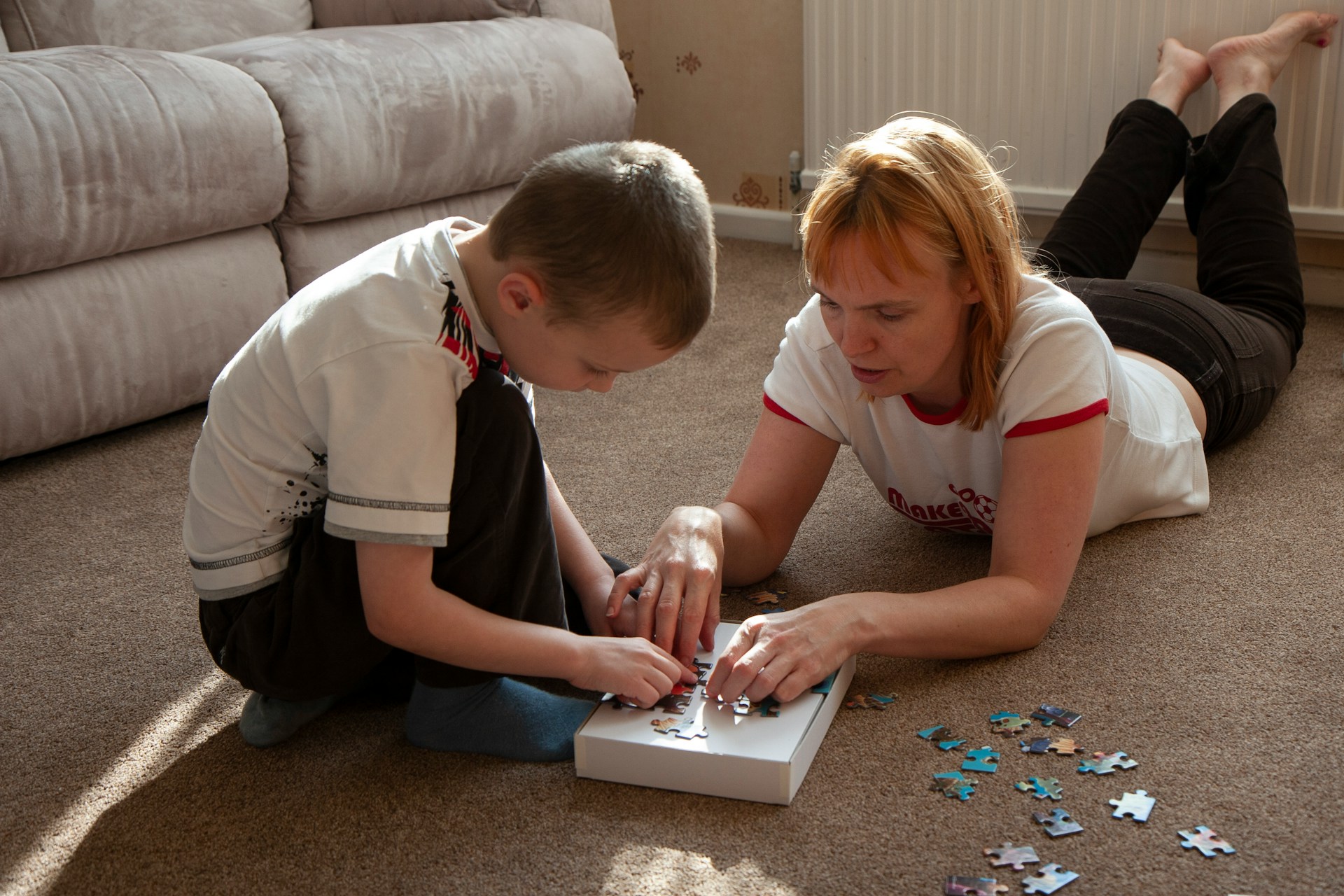
ABA Therapy Duration: How Long Should Your Child Attend?
Discover the optimal ABA therapy duration for your child. Learn how long they should attend therapy for the best results in our latest blog post.
Key Highlights
- The duration of ABA therapy is not one-size-fits-all; it is customized to your child's individual needs.
- A Board Certified Behavior Analyst (BCBA) determines the recommended hours after a comprehensive assessment.
- ABA treatment plans are either "Focused" (10-25 hours/week) or "Comprehensive" (26-40 hours/week).
- Therapy hours can be adjusted over time based on your child's progress and changing goals.
- Early and intensive ABA therapy often leads to the best possible outcomes for children with autism spectrum disorder.
- The ultimate goal is to help your child gain independence and improve their quality of life.
Introduction
If your child has been diagnosed with autism spectrum disorder, your doctor may have recommended Applied Behavior Analysis (ABA) therapy. As you explore this effective intervention, one of the first questions that likely comes to mind is, "How long will my child need to attend?"
The commitment to ABA therapy can seem significant, and it's natural to wonder about the duration. This guide will help you understand how therapy length is determined and what to expect on your journey.
Understanding ABA Therapy and Its Goals
Applied Behavior Analysis is a proven method for helping children with developmental conditions learn and grow. At its core, ABA therapy aims to improve essential skills and encourage positive behaviors by applying principles of behavior analysis. The focus is always on making meaningful changes that enhance your child's life.
The primary goals often revolve around boosting communication skills, fostering social skills, and increasing independence in daily routines. By understanding these objectives, you can better appreciate why the duration and intensity of therapy are tailored to your child.
What Is ABA Therapy?
So, what is ABA therapy exactly? It is a science-based approach designed to improve specific behaviors and skills, including social, communication, and learning abilities. This form of autism treatment is based on decades of research and is highly recommended for children with autism and other developmental disorders. It's not a single method but a collection of strategies that help us understand how behavior works in real situations.
During ABA therapy sessions, a trained behavior analyst works directly with your child. The sessions often involve structured activities, games, and practical exercises. Using techniques like positive reinforcement, the therapist helps your child learn new skills and reduce behaviors that may interfere with their development.
The entire approach is personalized. The Board Certified Behavior Analyst (BCBA) creates a plan specifically for your child's needs and goals, ensuring the therapy is both effective and engaging. This customization is a key reason why ABA is a successful form of behavior analysis.
Common Objectives in ABA Treatment
The goals of an ABA treatment plan are always centered on helping your child build functional skills for greater independence and a better quality of life. While every plan is unique, there are several common objectives that therapists and families work toward together. These goals address key developmental areas.
These objectives are designed to build a foundation for lifelong learning and social connection. They target everything from basic self-care to complex social interactions, helping to decrease challenging behaviors by teaching positive behaviors as replacements.
Some of the most common goals in ABA include:
- Improving communication and language skills
- Developing social skills and peer interaction
- Increasing independence with self-help and community skills
- Building coping and tolerance skills
- Enhancing learning-readiness skills
- Reducing behaviors that interfere with learning, like aggression or tantrums
How ABA Therapy Duration Is Determined
Deciding on the duration of ABA therapy is a careful and collaborative process. There is no magic number of hours that works for every child. Instead, the recommendation is based on a detailed evaluation of your child's unique strengths, needs, and goals. This ensures the treatment plan is perfectly suited to them.
The journey begins with an in-depth assessment that leads to an individualized plan. The number of recommended ABA services hours is directly tied to what is needed to help your child achieve the best possible outcomes and become as independent as possible.
Initial Assessments and Individualized Planning
The very first step in starting ABA therapy services is a comprehensive assessment conducted by a Board Certified Behavior Analyst (BCBA). This evaluation is crucial for creating an effective and individualized treatment plan. The behavior analyst will use several methods to gather information, including skills-based assessments to establish a baseline of your child's abilities.
During this phase, the BCBA will also interview you to learn about your family, your child’s strengths, and your primary concerns. Direct observation is another key component, as the analyst will watch how your child interacts with their environment to understand how it affects their behavior.
All this data is then carefully reviewed to design a treatment plan that is customized to your child. This plan outlines specific, measurable goals that will guide the therapy and help determine the clinically recommended number of hours needed for success.
Factors That Influence ABA Therapy Recommendations
A variety of factors are considered when a behavior analyst recommends the number of hours for ABA therapy. The recommendation isn't arbitrary; it's a clinical judgment based on a complete picture of your child’s needs. The primary goal is to provide enough support to make meaningful, long-term progress.
The severity of autism symptoms and the presence of challenging behaviors play a significant role. A child with more significant developmental needs or disruptive behaviors may require a more intensive plan to build foundational skills and ensure safety.
Here are some of the key variables that influence the recommendation:
- The number of goals being targeted
- The intensity and level of interfering behaviors
- Specific medical needs
- The amount of parent and caregiver coaching required
- The child's age and developmental level
Typical ABA Therapy Schedules
When you begin ABA therapy, you'll find that therapy schedules can vary quite a bit. It's not a small commitment, with weekly hours typically ranging from 10 to 40 hours. This might sound like a lot, but these therapy hours are designed to provide consistent, effective support that helps your child learn and generalize new skills.
The specific number of ABA hours and the structure of the ABA sessions will be outlined in your child's individualized treatment plan. Let's explore what a typical weekly schedule might look like and how those hours are allocated.
How Many Hours Per Week Do Most Children Attend?
One of the most common questions parents ask is about the typical number of hours for ABA sessions each week. Generally, children attend ABA therapy for anywhere from 10 to 40 hours per week. This range is wide because the plan is tailored to your child’s specific needs and goals.
For some, a focused plan of 10-25 hours a week is enough to work on a limited number of skills. For others, a comprehensive plan of 26-40 hours is recommended to address deficits across multiple developmental areas. Your BCBA will recommend the therapy hours that are most appropriate for your child's progress.
The goal is to provide enough intervention to create lasting change. Research and clinical practice have shown that this level of intensity, especially in early intervention, is highly effective. The number of hours is always based on what will best help your child thrive.
Minimum, Maximum, and Recommended ABA Hours
While there is no universal minimum or maximum, ABA therapy schedules are guided by best practices and your child's specific needs. The Council of Autism Service Providers outlines two different treatment models that help define the recommended ABA hours. These models ensure the therapy intensity matches the child's goals.
Focused ABA plans are less intensive and are designed for children who need to work on a few specific skills. Comprehensive ABA plans are more intensive and are for children with needs across many developmental domains. For instance, some wonder if 30 hours of ABA is too much, but for a comprehensive plan, this amount is often standard and highly effective.
Your ABA provider will recommend a schedule that fits one of these models.
Adjusting ABA Therapy Over Time
An ABA therapy treatment plan is not set in stone. It is a flexible, dynamic roadmap that evolves with your child. ABA therapists use continuous data collection to monitor your child’s progress and make informed decisions about the plan. This includes adjusting the number of therapy hours as needed.
As your child masters new skills and meets goals, the intensity or focus of therapy might change. Your provider will work with you to decide when it's time to increase or decrease hours, ensuring the plan always matches your child’s current needs.
Recognizing Signs for Increasing or Decreasing Hours
Your behavior analyst and ABA therapists will constantly monitor your child's response to therapy to determine if adjustments are needed. Recognizing the signs for changing therapy hours is a collaborative process between you and your therapy team. These decisions are always data-driven and focused on your child's well-being.
Decreasing hours is a positive step that usually happens when a child shows significant progress. For example, if your child starts generalizing skills to new environments and has fewer challenging behaviors, the therapist may suggest fading out therapy sessions. This transition is done gradually to ensure the gains are maintained.
On the other hand, there may be times when increasing hours is beneficial. Key indicators for adjusting hours include:
- Decreasing Hours: The child consistently meets goals, generalizes skills without prompting, and shows a significant reduction in interfering behaviors.
- Increasing Hours: Progress has stalled, or new, significant behavioral challenges have emerged.
- No Change: The child is making steady progress toward their goals with the current level of support.
Milestones and Progress Indicators in ABA Programs
Tracking your child’s progress is a cornerstone of ABA programs. Progress is not just about reducing problem behaviors; it’s about building a wide range of functional skills. Your ABA provider will identify specific milestones and progress indicators within the treatment plan to measure success and guide decisions about the therapy duration.
These indicators are clear, observable, and measurable. For example, a milestone might be your child initiating a conversation with a peer or completing a morning routine independently. Seeing your child’s progress in these areas is incredibly rewarding and confirms the therapy is working.
Common progress indicators that suggest a child is ready to transition or reduce hours include:
- The primary objectives of the treatment plan have been met.
- The child can learn new skills from their natural environment without direct instruction.
- New skills are emerging spontaneously.
- Parents and caregivers can successfully manage behaviors without a BCBA's direct support.
Intensive vs. Focused ABA Therapy Approaches
As you've learned, ABA therapy can be delivered at different levels of intensity. The two main models are intensive therapy (often called comprehensive ABA) and focused ABA therapy. Understanding the difference is key to knowing what to expect from your child's treatment plan. Each approach is designed to address specific types of behavioral challenges and skill deficits.
Your ABA provider will recommend one of these approaches based on the initial assessment. The choice between them directly impacts the number of weekly hours and the scope of the therapy goals.
Differences in Therapy Intensity Levels
The main difference between focused and intensive ABA therapy is the scope and therapy intensity. A focused plan targets a limited number of specific goals, while a comprehensive plan addresses skills across multiple developmental domains. The number of hours of ABA therapy per week reflects this difference.
A focused plan is often suitable for children who need help with a few particular skills, such as social interaction or specific challenging behaviors. It's also sometimes used as a step-down from a more intensive program. A comprehensive plan is for children who show deficits in many areas and require a more immersive learning environment.
Here’s a quick breakdown of the differences:
- Focused ABA Therapy: Typically 10-25 hours per week. It targets a few specific functional skills or problem behaviors.
- Comprehensive ABA Therapy: Typically 26-40 hours per week. It addresses a broad range of skills, including communication, social, and self-help skills.
- Goal: Focused plans aim for specific improvements, while comprehensive plans aim to close the developmental gap with peers.
Impact of Intensity on Duration and Outcomes
Does the intensity of ABA therapy influence its duration and results? Absolutely. Research consistently shows that the intensity of therapy, particularly when started at an early age, has a significant impact on achieving the best possible outcomes. More intensive programs are often associated with more substantial and faster progress.
For many young children, a comprehensive, high-intensity program is recommended because their brains are highly adaptable. This early, intensive work can help close the gap in developmental domains compared to their neurotypical peers. It sets a strong foundation for future learning and independence.
While it may seem like a large commitment, investing in intensive therapy early on can reduce the need for services as your child gets older. The goal is to provide the right amount of support at the right time to maximize your child's potential and improve their long-term quality of life.
Duration Guidelines Across Age Groups
The recommended duration of ABA therapy can also vary depending on your child's age. Early intervention is a cornerstone of effective ABA, and treatment plans for young children in early childhood often look different from those for school-age children. The goals and intensity are adjusted to be developmentally appropriate.
Whether your child is a toddler or a teen, the ABA treatment plan will be customized to their specific needs. Let's look at how recommendations might differ for early intervention compared to programs for older children.
Early Intervention vs. School-Age Recommendations
Early intervention is critical. Research shows that young children, especially those diagnosed before age four, tend to show the most significant and lasting progress with ABA therapy. For this reason, comprehensive ABA programs are often recommended for toddlers and preschoolers.
As children get older, their needs change. A school-age child may have a more focused treatment plan that targets social skills with peers or behaviors that interfere with learning in a classroom. However, older individuals with severe needs can also benefit from comprehensive treatment. The plan is always tailored.
Here’s a general comparison of recommendations:
Transitioning Out of ABA Therapy
Transitioning out of ABA therapy is a major milestone and a primary goal of any treatment program. This process, often called fading, is done gradually and carefully to ensure your child maintains the skills they have learned. The decision to begin this transition is made collaboratively with your ABA provider based on your child's progress.
The transition doesn't mean all support ends abruptly. Instead, the number of therapy sessions is slowly reduced. Your ABA provider will also equip you with strategies to continue supporting your child's development at home and in the community, ensuring the positive changes are long-lasting.
Key signs that a child is ready to transition out of therapy include:
- Meeting most or all treatment goals.
- Successfully generalizing skills to different settings and with different people.
- Learning new skills naturally from their environment.
- Having a strong support system (family, school) to maintain progress.
When to Consider Ending ABA Therapy
The question of when to stop ABA therapy is just as important as when to start. The decision is not based on a predetermined amount of time but on your child’s progress and readiness. When your child has met the primary goals of their treatment plan and can successfully apply their new skills in daily life, it may be time to consider discharge.
This decision should always be made in close collaboration with your ABA therapists. They will use data to show how your child is progressing and help you create a plan for a smooth transition. Ending therapy is a celebration of your child's hard work and achievements, marking a new chapter in their journey toward independence.
Evaluating Progress and Readiness for Discharge
Evaluating progress and determining readiness for discharge is a formal process guided by your ABA provider. Your ABA therapists will review progress indicators and data from the treatment plan to see if the main objectives have been met. The focus is on ensuring your child has developed the skills needed to thrive with less direct support.
This evaluation looks at your child’s strengths and their ability to navigate their natural environment. Can they manage their behaviors in different settings? Are they learning new things without direct instruction? Answering "yes" to these questions is a strong sign of readiness.
Your ABA provider may consider discharge when the following criteria are met:
- Problem behaviors have reduced significantly and can be managed by caregivers.
- The client has met the goals outlined in the treatment plan.
- The client can generalize new behaviors to new environments with minimal help.
- New skills are emerging spontaneously without direct teaching.
Ongoing Support After ABA Completion
Completing an ABA therapy program is a huge accomplishment, but it doesn't mean your child's support system disappears. Ongoing support is crucial for maintaining the skills learned and continuing to build on them. This support often involves parents and caregivers continuing to use ABA strategies in daily life.
Beyond parental involvement, other services can provide valuable ongoing support. Depending on your child's individual needs, you might explore other therapies or resources to help with social interaction, communication, or motor skills.
Here are some forms of ongoing support to consider after ABA therapy services:
- Parent training refreshers to keep your skills sharp.
- Social skills groups to practice interaction with peers.
- Speech therapy to continue developing communication skills.
- Occupational therapy to work on fine motor and daily living skills.
Conclusion
In conclusion, determining the appropriate duration for ABA therapy is crucial for your child’s development and progress. Considering various factors such as initial assessments, individualized planning, and a child's unique needs enables you to tailor the therapy effectively.
As you navigate through the journey of ABA therapy, be attentive to the signs indicating when to adjust the therapy intensity or even consider transitioning out. Regularly evaluate milestones and progress indicators to ensure your child is receiving the best possible support.
If you're seeking personalized guidance on your child’s ABA therapy journey, don't hesitate to reach out for a consultation with Milestone Achievements’ specialists. Your child’s growth and well-being are worth every effort!
Frequently Asked Questions
Is 30 hours of ABA therapy per week too much for my child?
Not necessarily. For children in comprehensive ABA programs, 30 or more therapy hours per week is often recommended to address significant developmental needs. This therapy intensity is scientifically proven to produce the best outcomes. The number of hours is always tailored to your child’s needs and tolerance levels.
How long does ABA therapy usually last overall?
The average duration of intensive ABA therapy programs is about three years, though the range for medically necessary treatment can be anywhere from 18 months to five years. The total length depends on individual needs, the age at which early intervention begins, and the child's progress through their treatment plan.
What scenarios can affect how long my child should attend ABA therapy?
A variety of factors can influence the duration of ABA therapy. Key scenarios include the severity of challenging behaviors, the rate of your child's progress, their age at the start of therapy, and the number of goals in their treatment plan. Consistent parental involvement can also help accelerate progress.
Sources:
- https://pmc.ncbi.nlm.nih.gov/articles/PMC5639250/
- https://my.clevelandclinic.org/health/treatments/25197-applied-behavior-analysis
- https://psychcentral.com/autism/continuous-measurement-aba
- https://www.researchgate.net/publication/360416951_Effectiveness_of_the_ABA_Method_and_Individual_Education_Programs_for_the_Treatment_of_Autistic_Children_A_Case_Study
- https://www.autismspeaks.org/applied-behavior-analysis


Partner with us on your child's journey
Milestone Achievements offers evidence-based ABA therapy to help children with autism reach their full potential. Together we’ll set meaningful goals and celebrate progress every step of the way.
Start ABA Services Today





